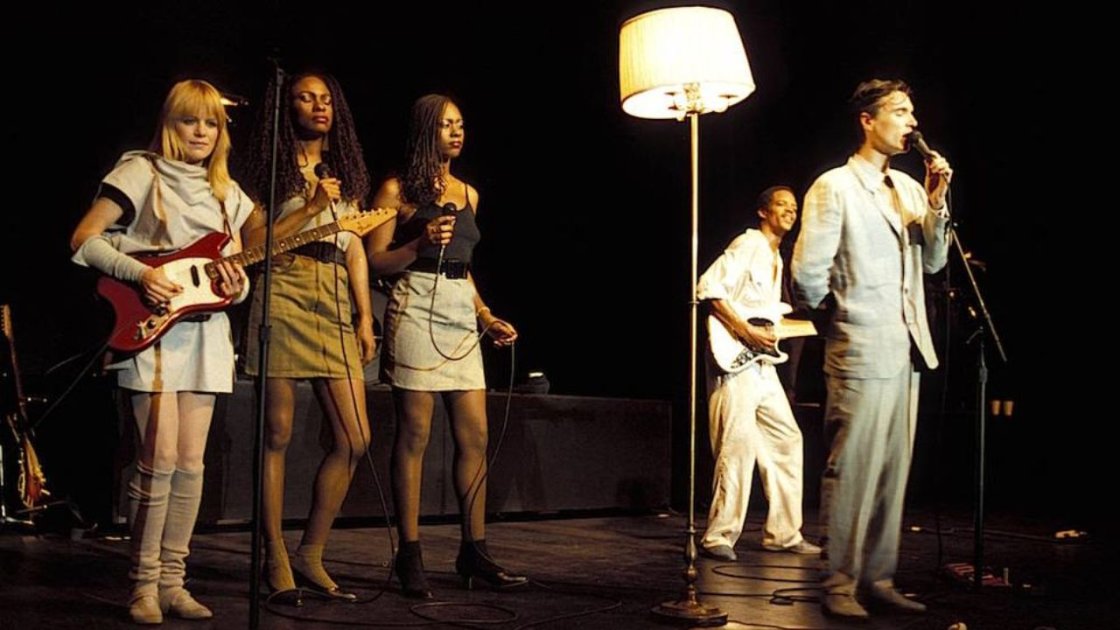
The answer to this question lies in how the film neatly solves the question that plagues most concert movies. How do you share the experience of music meant to make you dance with a seated movie theater audience?
"Stop Making Sense" is an American movie from 1984, featuring a live performance by the American rock band Talking Heads. it was shot over four nights at Hollywood's Pantages Theatre in December 1983, when Talking Heads were touring to promote their 1983 album Speaking in Tongues, it was directed by Jonathan Demme.
The movie “Stop Making Sense” includes the performance of Talking Heads, “Psycho Killer” (1977) their first single and it continued to their most recent hit at the time, "Burning Down the House" (1983). The movie further includes songs from the solo career of frontman David Byrne and by Tom Tom Club, the side project of the drummer and bassist, Chris Frantz and Tina Weymouth.
backing singers Lynn Mabry and Ednah Holt, the guitarist Alex Weir, the keyboardist Bernie Worrell and the percussionist Steve Scales joined the main four members of Talking Heads. The band raised the budget of $1.2 million themselves.
to be one of the greatest concert films of all time, and a cult classic Stop Making Sense is considered by many critics. It was selected for preservation in the United States National Film Registry by the Library of Congress as being "culturally, historically, or aesthetically significant" in 2021 and the film is a pioneering example of the use of early digital audio techniques.
Also Read : Talking Heads on the once-in-a-lifetime ‘Stop Making Sense’
The reason the film “Stop Making Sense” immerses the audience is that the Lead singer David Byrne walks onto a bare stage with a portable cassette tape player and an acoustic guitar and the band's sound and motion are established in the opening shot. The singer plays the infectious background of the band's early hit "Psycho Killer." This opening scene made the movie captivating by the camera's focus on details—a close-up of Byrne's tapping foot, then a pan upwards to capture his body's idiosyncratic, loose-limbed, electric movement as he plays.
The gunshot-like beats cause Byrne to stagger "like Jean-Paul Belmondo in the final minutes of 'Breathless', a hero succumbing, surprised, to violence that he'd thought he was prepared for." with each successful song Byrne is joined by more members of the band: first by Tina Weymouth for "Heaven" (with Lynn Mabry providing harmony vocals from backstage), second by Chris Frantz for "Thank You for Sending Me an Angel", and third by Jerry Harrison for "Found a Job". as the music equipment whipped and added to the set to accommodate the additional musicians: back-up singers Lynn Mabry and Ednah Holt, keyboardist Bernie Worrell, percussionist Steve Scales, and guitarist Alex Weir.
“Stop Making Sense” establishes a patient focus on the details of the performance and a feeling of narrative momentum that mirrors the arc of the performance itself, drawing the viewer into the experience.
Also Read : TV Shows That Got Better With Each Season
The film includes Byrne's "big suit", an absurdly large business suit that he wears for the song "Girlfriend Is Better". The suit was partly inspired by Noh's theater styles and became an icon not only of the film – as it appears on the movie poster, for instance – but of Byrne himself.

Byrne said: "I was in Japan in between tours and I was checking out traditional Japanese theater – Kabuki, Noh, Bunraku – and I was wondering what to wear on our upcoming tour. A fashion designer friend (Jurgen Lehl) said in his typically droll manner, 'Well, David, everything is bigger on stage.' He was referring to gestures and all that, but I applied the idea to a businessman's suit."
In her view Pauline Kael said, "When he comes on wearing a boxlike 'big suit' – his body lost inside this form that sticks out around him like the costumes in Noh plays, or like Beuys' large suit of felt that hangs off a wall – it's a perfect psychological fit." On the DVD he gives his reasoning behind the suit: "I wanted my head to appear smaller and the easiest way to do that was to make my body bigger because music is very physical and often the body understands it before the head."
The title of the film originated from a lyric in the song "Girlfriend Is Better."